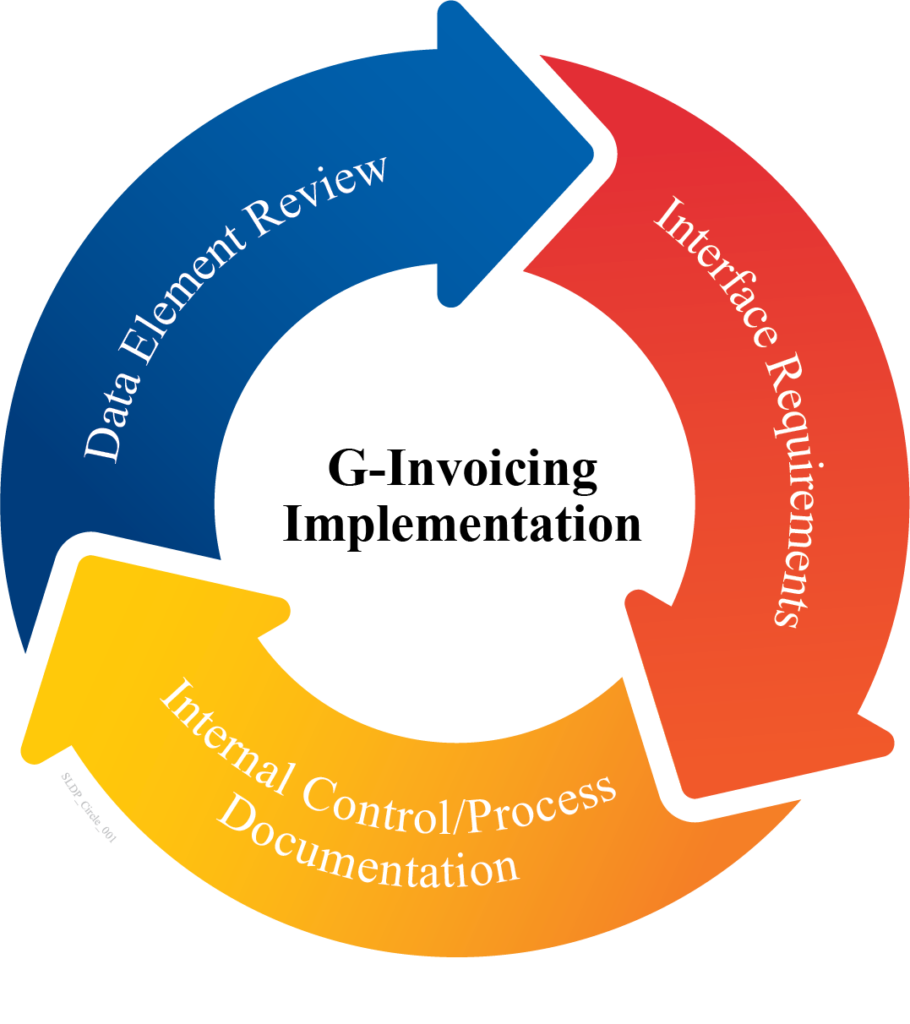By Daniel Black, Adriano Polimeni, and Sara Tolpa
The Government Accountability Office (GAO) has issued a disclaimer of opinion on the financial reports of the United States Government since 1997. G-Invoicing is being introduced to mitigate the long-standing material weakness related to Intergovernmental activity and the unreconciled differences between Federal Agencies. Successful G-Invoicing implementation will increase data transparency and streamline the settlement of Intra-Governmental Payment and Collection (IPAC) funds.
G-invoicing is not an all-encompassing solution; there are areas in which G-invoicing falls short, such as designing Internal Controls related to Intergovernmental Transactions (IGT) buying and selling, receipt and acceptance, and practical applications of G-Invoicing. Agencies will need to focus on key areas, including data element review, interface requirement review, and updates to Internal Control and process documentation, for G-Invoicing to be successful.
What G-Invoicing Does:
G-Invoicing is the Federal Government’s solution to improve Intragovernmental Transactions (IGT). The main objective is to provide a common platform for organizing IGT activity, implement a Federal Data Standard, and increase in data transparency.(1) G-Invoicing replaces the former reimbursable agreement process with an application for the electronic origination, review, and approval of Buy/Sell Interagency Agreements (IAA). IGT activity documented in G-Invoicing will allow Federal Program Agencies (FPA) to accurately identify the respective accounting triggers. In addition, G-Invoicing will integrate with Inter-Governmental Payment and Collection System (IPAC), which will continue to operate as the application for the settlement of funds between federal entities, transacting non-Buy/Sell activity, reporting transactions to Central Accounting Reporting System (CARS), and researching certain transaction inquiries.(2)
What G-Invoicing Does Not Do:
Once a Federal Agency successfully implements G-Invoicing, the agency will be able to accept funding terms with the other Federal Agencies. G-Invoicing is not an accounting system or a procurement system; however, it is in place to allow entities to agree on the accounting treatment of reimbursable activity. The implementation of G-Invoicing allows for financial reporting consistency, which will help standardize the Intra-Governmental Transaction process. This does not establish or replace internal controls; rather, it makes use of policy and system controls that are already in place at an Agency.
As IAAs are established, each partner should recognize revenue/expense and any receivables/ payables. G-Invoicing is not a replacement for accounting recognition and therefore should not be viewed as a receipt and acceptance system. The success of G-Invoicing relies on the consistent implementation of data elements, which provide the required details for Intra-Governmental Transactions. The implementation of G-Invoicing alone will not resolve the Federal Government’s material weakness of Intra-Governmental Transactions because it requires acceptance across Agencies. However, it is a tool that will allow Federal Agencies to progress toward improving IGTs.
Streamlined Implementation – Federal Agency Keys for Success:
 Federal Agencies will be required to ensure successful implementation of G-Invoicing. The first step in determining the successful implementation is completing a review of the Agency’s data elements (standardizing data). The United States Department of Treasury (Treasury) uses the Federal Intragovernmental Data Standards (FIDS), which lists standard data elements for General Terms and Conditions (GT&C), Orders, Performance, and Organization as it relates to implementing G-Invoicing. Agencies are notified when Treasury updates and releases new versions so that the Agencies can determine how their current systems will interface and exchange data with G-Invoicing.
Federal Agencies will be required to ensure successful implementation of G-Invoicing. The first step in determining the successful implementation is completing a review of the Agency’s data elements (standardizing data). The United States Department of Treasury (Treasury) uses the Federal Intragovernmental Data Standards (FIDS), which lists standard data elements for General Terms and Conditions (GT&C), Orders, Performance, and Organization as it relates to implementing G-Invoicing. Agencies are notified when Treasury updates and releases new versions so that the Agencies can determine how their current systems will interface and exchange data with G-Invoicing.
Federal Agencies should also be aware of the interface requirements of implementing G-Invoicing. Ensuring a successful transition to G-Invoicing may require a web service call to update or modify GT&C, Order or Performance information, and certificate-based authentication, which requires a Treasury-issued certificate. It is imperative that Agencies establish common business rules and file naming convention to ensure that files and data interface correctly. Further, standardizing data is key to the success of G-invoicing. Agencies should review current systems and implement the appropriate solutions to allow for a successful interface with G-invoicing. The data elements should be compared the new Federal Governmental Data Standards (FIDS) for consistency. Collaboration between IT and accounting professionals is necessary to ensure that data can interface correctly between systems. In order to continue to successfully navigate financial statement audits, Agencies should document and update Internal Control procedures based on the implementation of G-Invoicing.
Through the implementation of G-Invoicing, entities will be able to share information with one another, creating a foundation to drive improved transaction processing and financial reporting and drive efficiency of operations Governmentwide. It is essential that the United States Government partner and leverage the knowledge of Certified Public Accounting (CPA) firms and Consultants to implement G-Invoicing successfully.
Connect with Us
This publication is for informational purposes only and does not constitute professional advice or services, or an endorsement of any kind.
Kearney is a Certified Public Accounting (CPA) firm focused on providing accounting and consulting services to the Federal Government. For more information about Kearney, please visit us at www.kearneyco.com or contact us at (703) 931-5600.
(1) G-Invoicing (treasury.gov) or Microsoft Word – G-Invoicing Playbook 1.0.docx (treasury.gov) (Page 3 of 12)
(2) g-invoicing-program-guide.pdf (treasury.gov) (Page 4 of 34)